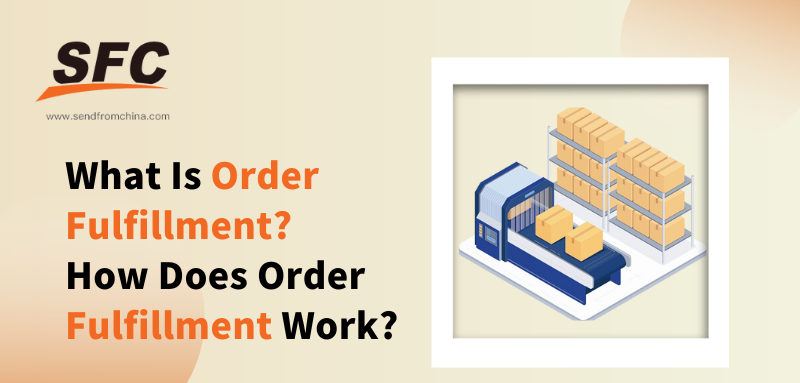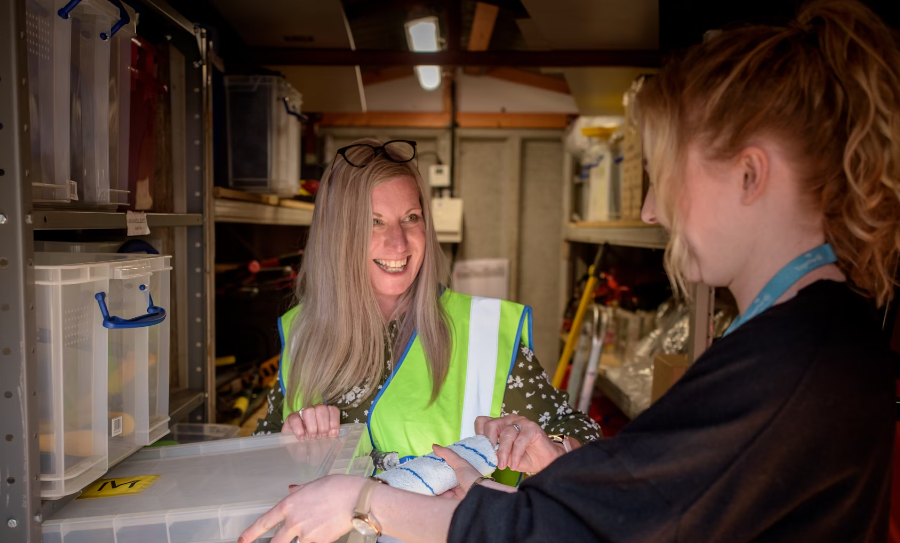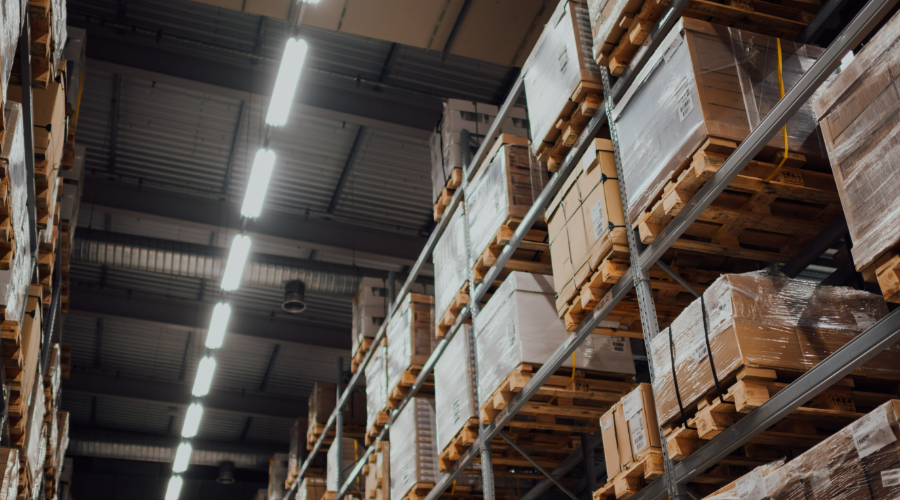Table of Contents
What Is Order Fulfillment? How Does Order Fulfillment Work?
Time: Mar 14,2024 Author: SFC Source: www.sendfromchina.com
This blog article is crafted with you in mind, aiming to transform your fulfillment process from a headache into a strategic advantage that sets you apart from the competition.

1. What Is Order Fulfillment
Order fulfillment encompasses the entire process from the moment a customer places an order until they receive their purchase. The sequence of operations begins when an order is received and involves inventory management, order processing, picking & packing, shipping, and delivery. It's a critical function for both e-commerce and brick-and-mortar retailers, ensuring that customers receive their products in a timely and efficient manner. The efficiency of this process directly impacts customer satisfaction, loyalty, and the overall reputation of a business.For many businesses, order fulfillment can be an intricate and resource-intensive operation, particularly for those dealing with high volumes of orders or a wide range of products. To optimize this process, companies may invest in advanced warehouse management systems(WMS), and automation technologies, or collaborate with third-party logistics (3PL) providers. These efforts aim to streamline operations, reduce errors or delays, and improve delivery times, thereby enhancing the overall customer experience. As e-commerce continues to grow, the role of effective order fulfillment becomes increasingly important in staying competitive and fulfilling customer expectations.
2. How Does Order Fulfillment Work
Order fulfillment is a multi-step process that starts when a customer places an order and ends with the delivery of the product to the customer. Here's a breakdown of how it typically works:- Receiving and Storing Inventory: The process begins with receiving inventory from suppliers or manufacturers. Once the inventory is received, it's counted, inspected for quality, and stored in a warehouse or distribution center. Proper organization is crucial to ensure that items can be easily located when orders are placed.
- Picking: When a customer places an order, the fulfillment process kicks into gear. The order information is typically managed through an order management system, which helps in tracking orders and inventory levels. The specific items included in the order are then picked from their storage locations.
- Packing: After picking, items are packed for shipping. Typically, it involves selecting the appropriate packaging materials to ensure items are protected during transit. The packing process also often includes the inclusion of packing slips or other documentation.
- Shipping: Once packed, the order is handed over to a shipping carrier. The choice of carrier can depend on various factors, including shipping speed, shipping costs, and the destination of the order. Shipping details, including tracking numbers, are usually provided to the customer to allow them to track the delivery of their order.
- Delivery: The final step in the order fulfillment process is the delivery of the order to the customer. The efficiency of the delivery process can significantly affect customer satisfaction.
- Returns Processing: Effective order fulfillment also involves handling returns including receiving returned items, assessing their condition, restocking them if appropriate, and processing refunds or exchanges according to the company's return policy.
3. Benefits of Order Fulfillment

Improved Customer Satisfaction
Increased Operational Efficiency
Enhanced Scalability
Reduced Errors and Returns
Better Inventory Management
Increased Competitiveness
Focus on Core Business Activities
Global Reach
4. Order Fulfillment Options
In-House Fulfillment: Also known as self-fulfillment, or merchant fulfillment, this option involves a business handling all aspects of the order fulfillment process internally, from storing inventory to packing and shipping orders. It offers maximum control over the fulfillment process but requires significant investment in warehouse space, staff, and logistics management.
Third-Party Logistics (3PL) Providers: Businesses can outsource their fulfillment operations to 3PL providers, who handle the storage, packing, and shipping of orders on their behalf. It is ideal for companies looking to scale quickly without the upfront investment in infrastructure and technology. It offers flexibility and can often provide access to better shipping rates due to the volume of shipments handled by the 3PL.
Dropshipping: In the dropshipping model, a business sells products without holding inventory. Instead, when an order is placed, the retailer purchases the item from a third party, which then ships it directly to the customer. This model significantly reduces the investment and risk associated with inventory management but offers less control over shipping times and product quality.
Fulfillment by Amazon (FBA): For businesses that sell on Amazon, FBA is a popular option where sellers send their inventory to Amazon's fulfillment centers. Amazon then takes care of storage, packing, shipping, customer service, and returns for these orders. FBA can provide access to Prime customers and other benefits of Amazon's vast logistics network, though it comes with specific fees and regulations.
Hybrid Fulfillment: Some businesses use a combination of fulfillment methods to best meet their needs. For example, a company might handle some products in-house but use a 3PL for others, or it might fulfill domestic orders internally while using dropshipping for international orders. This approach allows businesses to balance control and scalability.
5. How to Make Your Order Fulfillment Strategy

Evaluating Your Business Size
Choose the Right Order Fulfillment Model
Location
6. FAQs about Order Fulfillment
1. What is the biggest challenge in order fulfillment?
2. How can technology improve order fulfillment?
3. Is it better to handle order fulfillment in-house or outsource?
4. How does order fulfillment impact customer satisfaction?
5. Can small businesses compete with large retailers in terms of order fulfillment?
 Post Views:6626
Post Views:6626
Copyright statement: The copyright of this article belongs to the original author. Please indicate the source for reprinting.
Previous Post
Obsolete Inventory: Everything You Need To Know
Next Post
What Is TEMU's Fully Managed Model: Everything You Need To Know
TAGS
Hot Research
Get a Custom China Fulfillment Solution with FREE Storage for 60 Days
 Want to know about our services, fees or receive a custom quote?
Want to know about our services, fees or receive a custom quote?
 Please fill out the form on the right and we will get back to you within a business day.
Please fill out the form on the right and we will get back to you within a business day.
 The more information you provide, the better our initial response
will be.
The more information you provide, the better our initial response
will be.





 TAGS:
TAGS: